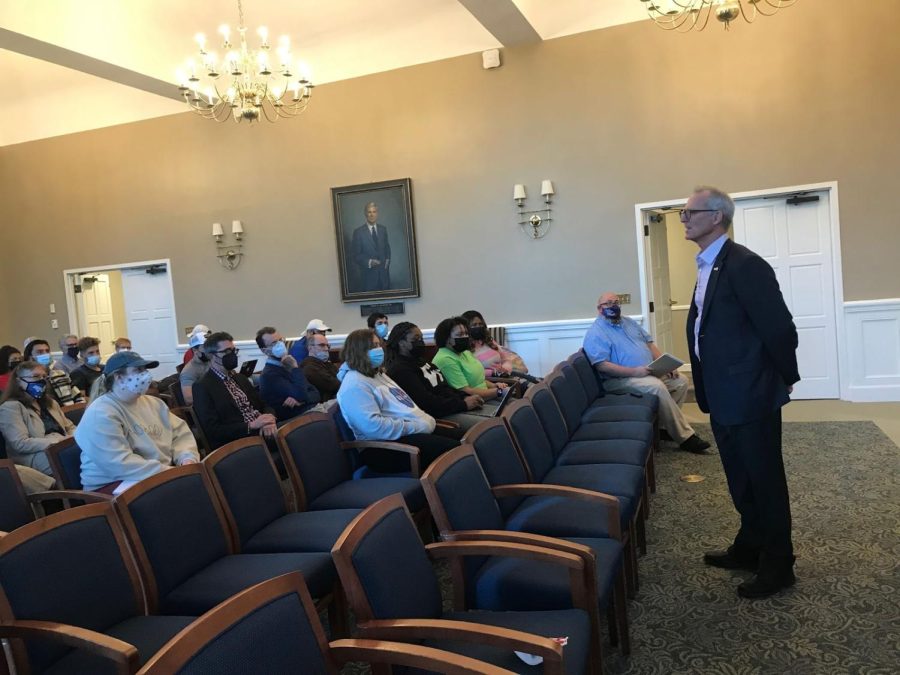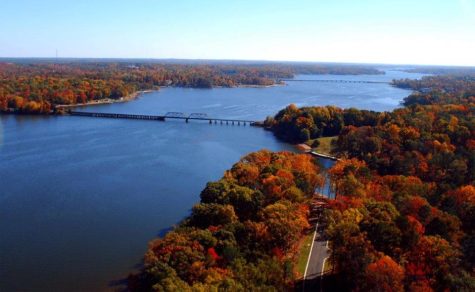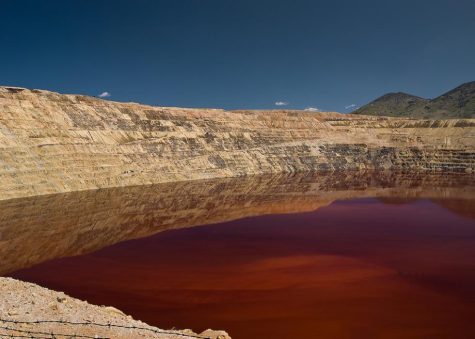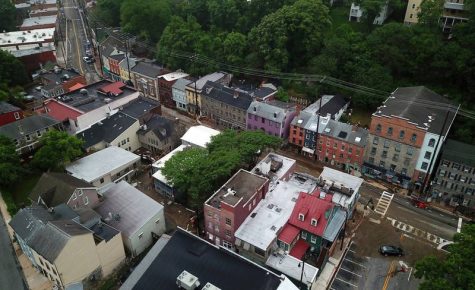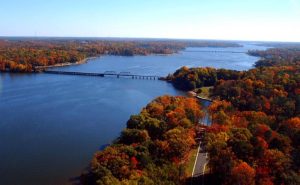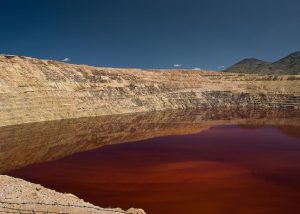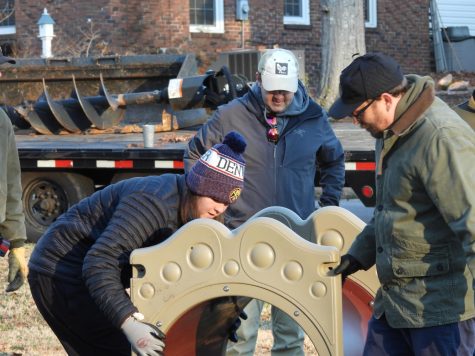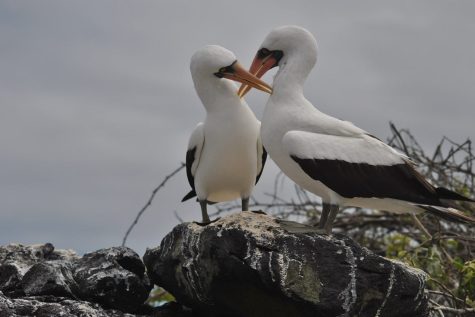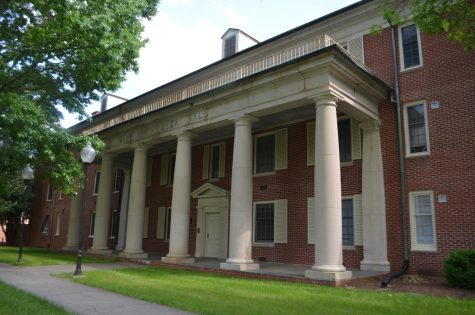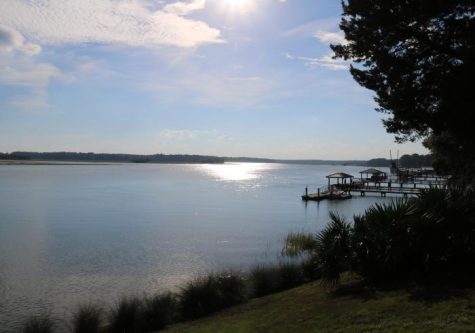Bob Inglis, the nation’s leading conservative voice for climate change, visits PC with lots to teach
Former U.S. Rep. Bob Inglis addresses Presbyterian College students and faculty in the Chapman Conference Center on Nov. 10.
April 22, 2022
Former U.S. Rep. Bob Inglis likes to joke that, as the congressman representing Greenville and Spartanburg counties — South Carolina’s 4th District — he came from “the reddest district in the reddest state” in America. Inglis said his conservative credentials were impeccable—he had A ratings from all the top conservative organizations— until he broke with his party on the issue of climate change.
“I became alone. I hadn’t been alone, but I became alone.” Inglis said.
In a wide-ranging interview before his keynote address at Presbyterian College on Nov. 10, Inglis explained that his evolution on the issue of climate change was a slow process. Growing up, he said, he never dreamed he would be advocating for action on such an issue.
“It wasn’t even a topic when I was growing up” in the Lowcountry South Carolina town of Bluffton. “Certainly (not) when I was in high school or college” at Duke University “or law school” at the University of Virginia, he added. “It just wasn’t a topic,” Inglis said.
Inglis’s political career began in 1992 when he decided to run for the U.S. Congress and got elected on his first try. “It was a miracle that I got elected,” he said with a chuckle. “I was in no way expecting to win, so it was a rather miraculous result.”
Inglis speaks of that time as his “Inglis 1.0” years and describes himself as somewhat rigid and even self-righteous.
Climate change was barely on his horizon during that time, but what he knew of it, he didn’t trust. “If Al Gore was for it,” he said, speaking of Bill Clinton’s vice president, “I was against it.”
He didn’t know it at the time, but his stance on the issue would undergo a drastic change.
The process was very gradual but Inglis said he believed it began when he decided in 1998 to run for the Senate against the long-serving Democratic Sen. Ernest “Fritz” Hollings. Losing that race left Inglis embittered and the blow to his pride sparked what he called his own personal “lawsuit” against the almighty, which he called “Inglis vs God.”
It took a long time for Inglis to work through his anger—it took six years, in fact, for the three stages of the “Inglis Metamorphosis” to unfold and for Inglis 2.0 to be born.
Step One: “The Teeth-Banging Accident”
After a fun day of rowing on the river with his family, Inglis collapsed in his bathroom and hit the counter face-first, driving all six of his front teeth up into his skull. At the hospital with his wife, the couple fretted over what could have happened. A blood clot? A heart attack? An aneurysm? The answer was none of the above: He was simply dehydrated. His doctor recommended that he take better care of himself and drink more water.
But during the major dental surgeries that followed and the long recovery process, God “got through to me,” Inglis said. Inglis began to think about the election loss, about how angry it made him to lose to a man as arrogant as he had judged Fritz Hollings to be.
Over time, however, he stopped focusing on Hollings and started thinking about his own arrogance— in blaming God.
“I realized that from God’s perspective there probably was about this much difference between him and me,” he said, holding up his thumb and index finger with about a half-inch of space between them.
Eventually, Inglis realized he wanted to return to Congress, but this time his attitude was completely different. He no longer thought he was better than everyone else, his humbling experiences and reflection having changed his worldview.
It was a conversation with his son, however, that altered his entire trajectory in Congress: “‘Dad, I’ll vote for you, but you’re going to clean up your act on the environment.’” This was the birth of Inglis 2.0.
Step Two: The Antarctic Trip
A humbler Bob Inglis returned to Congress in 2004, but his evolution on climate change was not complete. The second step in the “Inglis metamorphosis” came after, in line with his son’s wish for him, Inglis got appointed to the science committee and traveled to Antarctica to see how the taxpayers’ money was being spent.
That was when he was presented with ice core samples and saw with his own eyes the clear evidence they contained that the chemistry of the atmosphere had begun to change and that that change had coincided with the rapid increase in industrialization.
“It’s chemistry and physics,” he said. “You can’t argue with chemistry and physics.”
Climate change was real and was having detrimental, devastating effects on life on Earth, Inglis realized.
Step Three: The Great Barrier Reef Trip
But the final stage in Inglis’s metamorphosis did not occur until the science committee traveled to Australia’s Great Barrier Reef, which along with Mount Everest and the Grand Canyon is recognized as one of the seven wonders of the natural world.
As Inglis spoke to the scientist explaining the reef’s role in the ecosystem and the threat posed by the acidification of the oceans, he realized the scientist “was worshipping God in his own way” with his reverence toward the evidence he was presenting.
As they talked further and Inglis learned about the changes that the scientist had made in his lifestyle to do his bit to stem climate change, Inglis said he felt a surge of inspiration and realized wanted to be like this man, loving both God and people through caring for God’s creation.
That was the final stage in his evolution.
“In my first years in Congress I said climate change is nonsense. I didn’t know anything about it, except that Al Gore was for it… I admit I was pretty ignorant, but that’s the way it was for my first six years in Congress,” he said.
Inglis returned from Australia and immediately introduced the “Raise Wages, Cut Carbon Act of 2009.” This, he admitted, was probably not his best political move.
It was, after all, an election year; the country was in the grip of the Great Recession and the party was obsessed with staying “true to the team.” And “here I was, crossing to the other side, working on climate change.” For his efforts, the voters of the 4th District “kicked (me) out of Congress” after six terms, in 2010.
Fortunately this was not the last that was seen of Inglis. A foundation approached him and asked him, “an actual conservative,” to write and speak about free market solutions to the climate crisis. Inglis has been doing that ever since. He founded the Energy and Enterprise Institute at Virginia’s George Mason University in 2012, and in 2014 that institute was rebranded republicEn.org (the “En” stands for energy, entrepreneurship, and environment).
Through RepublicEn, Inglis is on a mission to “call conservatives to the cause and just say this is a topic for conversation. Conservatives should be about conservation, so let’s get with it!” he says.
Inglis was alone in advocating for climate change for some time. Despite this solitude, he did not flip back and forth on the topic, standing firm in what he believed in. He says he learned an important lesson.
“If you stand true, eventually the style will come back to you… truth will always be in style, eventually, and so you just need to stick to it… eventually the truth will overtake the lousy ideologies. I’m pretty sure of that.”

